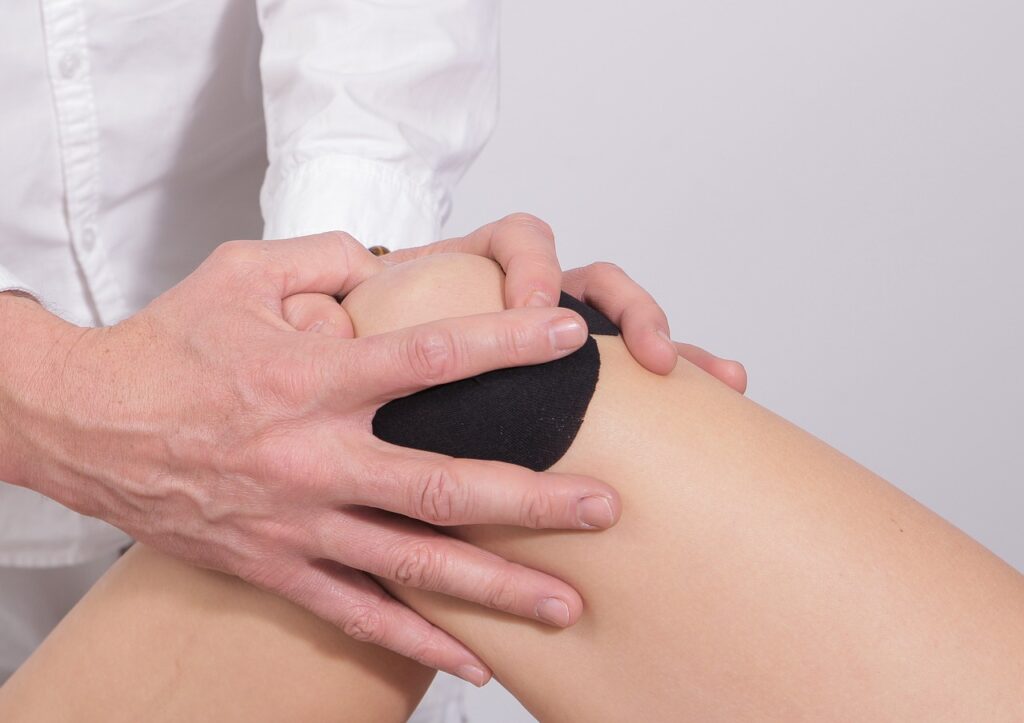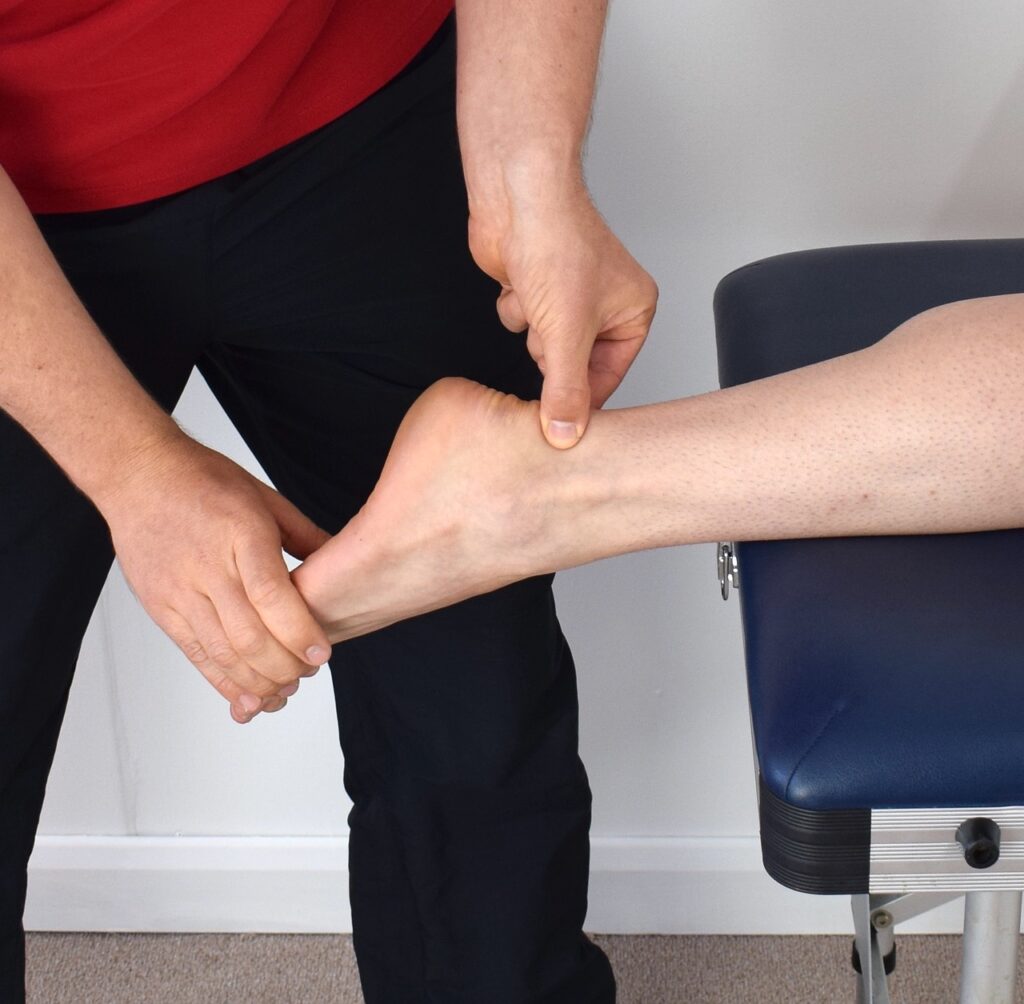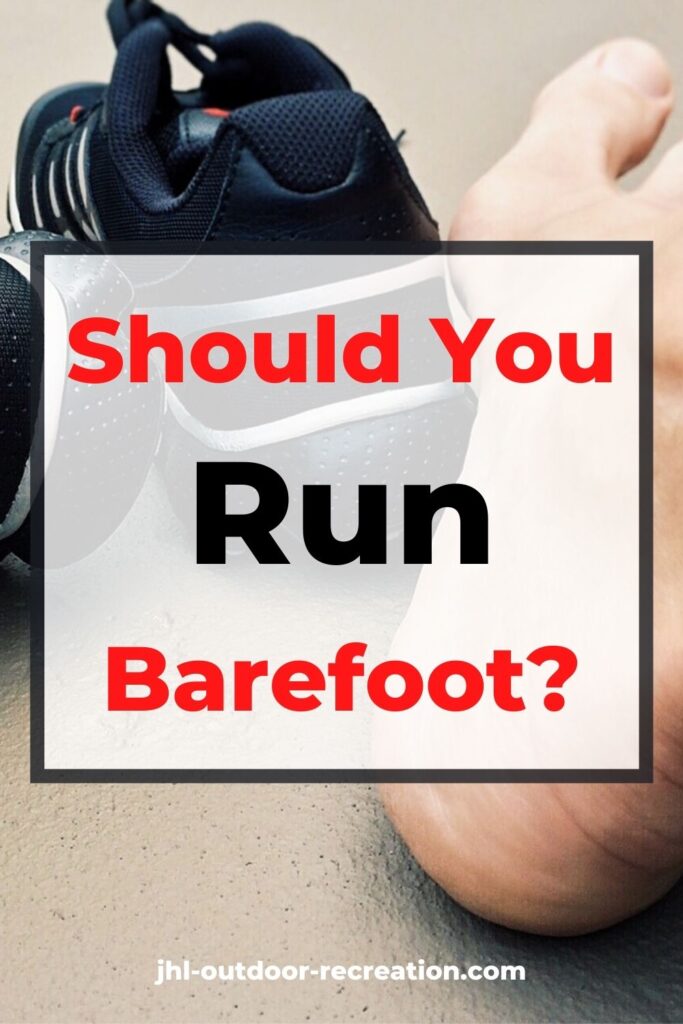The are increasing number of runners getting into barefoot running. It this just a trend? What are the pros of running barefoot? And here is the most important question. “Should we run barefoot”?
Well, you start as a regular runner. Yes, you love running. You wanna try everything to improve your running. – And yet, you feel cringey about barefoot running.
So, you run on a regular basis; you have the BEST running shoes in the world so that you could run fast and efficiently.
But, you might be annoyed by the knee pain that you have which at the same time hinders you from enjoying running.
You feel like you have reached the plateau. Then, you recall someone telling you to take off your shoes and try to run barefoot – “So, should I run barefoot, too?”
Before we answer this problem, let’s take a look at the PROS and CONS related to barefoot running.
PROS
1. Foot strike

You already know heel strike is so common and natural when it comes to running. That is why majority of runners in the world are heel strike runners. – But, is it “natural”?
Running shoes, no doubt, helps us improve running to be more efficient and make us run comfortably.
But, take a look at the thick cushion on the sole of the shoes. This cushion helps absorb the shock / force especially when you land on your heels first. – And, this what makes us comfortable for landing on heels.
Next, pay attention to how other animals run, maybe your cats, dogs, horses. You will notice they all land on their front paw / forefoot. – They don’t land on heels!
Yes, if you run barefoot, most probably you will adapt to FOREFOOT / MID-FOOT strike. This is because you will feel very uncomfortable or even painful to land on heels without the cushion of running shoes.
Shifting to forefoot / mid-foot strike can help ease / eliminate the uncomfortable feeling and pain for heel strike.
2. Posture
This is related to your foot strike.
While running barefoot, your brain will try to adapt to forefoot or mid-foot strike. By switching to forefoot or mid-foot strike, you will slightly LEAN your body forward, which also switch the centre of gravity forward. This allows your feet land on the ground CLOSE to the centre of gravity.
Also, notice when you land on heel while running, you’ll notice most of the time your running position is VERTICAL, meaning there is no leaning forward. This leads to a greater chance of OVER-STRIDING, meaning your feet land on the ground MUCH FARTHER from the centre of gravity.
So, does that matter? Shouldn’t running be like this?
Over-striding is an inefficient stride which our legs stay too long on the ground and we use additional effort to propel ourselves forward. – You wouldn’t feel it for a short run, but this additional effort can make a huge difference for long-distance running.
It doesn’t mean over-striding only happens in heel striker, but the chance of over-striding in forefoot and mid-foot strikers is LOWER because of the leaning posture while running, which allows the closer of centre of gravity foot landing.
3. Prevent knee injury

While barefoot running makes you land forefoot / mid-foot, this actually helps prevent you from getting knee pain and knee injury.
How? This SHIFTS the shock absorption point from knees to Achilles tendon / ankle.
Knee injury is the result of inefficient running technique. Although it is not all the cases, both heel strike and overstriding contribute knee pain and knee injuries.
Firstly, while land on our heel, our knees will absorb most of the shock.
Secondly, our legs are straight when over–striding, which makes our joint in a prone-to-injury position.
You don’t need rocket science to understand this. Well, you can just need to experience it while running if you are a heel striker.
You may feel everything is alright while running when you are on running shoes. But, pay attention on what happens to your legs after a few days or even right after your run, you might feel knee pain.
If the issue is not taken care of, it may further develop knee injuries, which hinder your mobility and your running ability in the future.
4. Strengthen calf muscle
Do you want to have toned calf muscle? Don’t be surprised that barefoot running can help you achieve this!
Forefoot / mid-foot strikes shift the shock absorption point to the ankle, which in turns activate and stimulate the calf muscles. Remember the calf raise workout? Forefoot / mid-foot running is similar to doing the calf raise workout for a much longer period of time.
After your barefoot running, you will feel soreness on your calf. And this is the indication of the activation of the calf muscle. Eventually, your calf becomes stronger and you could run barefoot more efficiently.
5. Less weight to run barefoot

We are so used to running with our running shoes and we have already adapted to the running with the weight of shoes.
But, what if you try to take off your shoes and run? You will feel an INSTANT relief and you feel your running is much easier and powerful! – “Geez, why don’t I run barefoot earlier?”
Because of the absence of the weight of your shoes, you will realize you can run much more effortless and longer without getting fatigue.
I start trying to run barefoot because I realize my run was “heavy”. – Ok, I still have a long journey to improve my run.
My usual run is 5 to 6k. But my first barefoot run was already longer than that. – You’ll like the sensation of your feet touching the ground and running “weightlessly”.
6. Run barefoot to save money
Ok, this is not really the main reason to run barefoot, but this is worth for mentioning, too.
Your shoes get worn out quickly if you wear it more frequently. This means that you reduce the frequency of wearing your running shoes if you run barefoot.
Then, literally you can save money from replacing your worn-out running shoes. Or, if you switch to become a pure barefoot runner, you save money from buying running shoes!
Well, you don’t have to go to that extend to become a pure barefoot runner. But, by considering the price of good quality running shoes, and the price may further increase because of the enhancement of design, you can really try considering running barefoot to save you some bucks for a longer period.
CONS
1. Injuries

While forefoot / mid-foot strikes prevent knee injury, the shift of the force absorption point may contribute to the Achilles tendon injury. This is caused by excessive amount of force absorbed by the Achilles tendon. – Well, the principle is similar to knee injury in heel strike.
When the injury of Achilles tendon is not taken care of, it may develop Achilles tendon ruptures, a condition where the cord that connects the calf muscle and the heel bone, is torn. – Similar to ankle injury, this can impact your walking, running and even jumping.
Although it sounds scary, the injury is mostly due to the OVER-EXAGGERATING forefoot landing, which places too much force on the Achilles tendon. So, it is actually not difficult to avoid this. – Allow your heel touch the ground after the foot strike.
Also, running barefoot can cause blisters or bleeding on your sole. These effects can be immediate right after your running session.
I discovered that my sole had blisters because of the barefoot running. But, the problem was really minor and it recovered just a few days. It didn’t affect my walking and running as well.
2. Uncomfortable and limited choice
Some people may feel running barefoot is crazy. Don’t the runners run on bumpy or rocky road? – Yeah, you are right.
Running barefoot does further increase the chance of injury on your sole, especially there are glasses, stones or needles on the road or the trail.
Plus, it is not a good idea to run barefoot under the hot sun or in the winter on the road. Our sole is not as sensitive as our palm. Because of this, our sole might get “burned” or “frozen” under the hot sun or in the winter without us realizing when we run barefoot.
Sometimes, we only notice when the situation gets worse, when it causes pain or affects us from walking, and we might realize this a few days after that running.
3. Awkward to run barefoot
Admit it. We don’t want to be the ODD ONE OUT. We don’t want to look different because we are afraid of judgment, critics and discrimination from others.
Imagine when you walk on a street, you see someone with funny costume or act differently. You spend more time looking at him and judging him. Because of this, we don’t like the special gaze from the people, because this is uncomfortable.
Same goes with barefoot running. It is actually common and unavoidable when we see some people have special gaze on us.
Instead of focusing on running, our mind starts to create drama and dialogue. This makes us judge and ashamed of ourselves. It makes barefoot running extremely awkward. We even question why we run barefoot as we look like a freak.
Should you run barefoot?
It depends.
Firstly, you notice the main reason to run barefoot is to instill a more efficient running technique, i.e. the foot strike and the posture. Running barefoot makes us appreciate the purpose of forefoot / mid-foot strikes and avoid over-striding.
But, if you already have a solid technique for running with running shoes, you don’t need to run barefoot, unless you wanna have a new experience in your running / training.
Next, running barefoot has some downsides, but those can be avoided if you improve your foot strike and posture. Also, don’t be ashamed of running barefoot and judged by the people, those people may be just attracted by the special thing. – They may feel COOL about barefoot running!
Lastly, a pure barefoot runner may seem impossible and not realistic. But, let’s look at Abebe Bikila, the first runner who won Olympic marathon barefoot in 1960. Of course, he trained with barefoot, too.
It is inspiring. But, we can make it more feasible. Why not try combining both barefoot running and running with shoes in your regime? You could leverage what you feel and learn while running barefoot to running with shoes. – Who knows it may improve your running to another level?
Relevant posts
